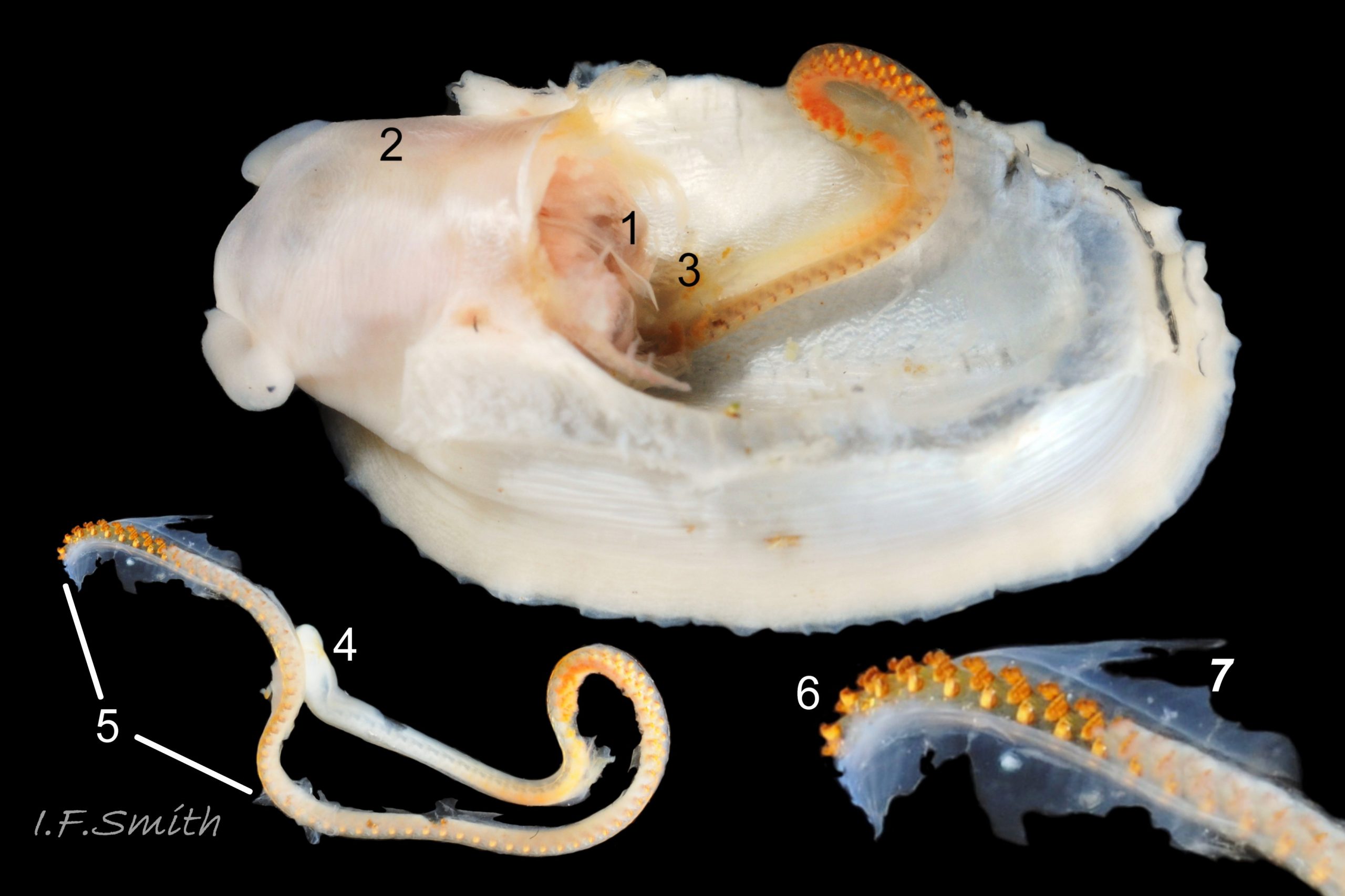Grazing is facilitated by powerful muscles in large buccal mass, and by rust-coloured iron-reinforced teeth on long radula with plentiful replacements for worn teeth.
1: posterior of large buccal mass.
2: anterior part of pink buccal mass discernible through translucent head.
3: pale posterior of translucent radular sac (length 22mm) near buccal mass as sac folded back on itself to fit inside body (shell length 24.7mm).
4: as 3 but with radula removed from body.
5: anterior of radula/radular sac that was curved over buccal mass and concealed when in body (above).
6: anterior of radula (enlarged) protruded from sac for use in grazing rock surface.
7: hyaline shield (damaged, see 32 Patella depressa. Odontophore. Lleyn, Wales. September 2015. for undamaged example on P. depressa).
Lengths of radulae as % of shell length (Fretter & Graham 1962, p.172) :
P. ulyssiponensis 80-140% (overlap with P.vulgata range).
P. vulgata 113-230%
P. depressa 140-270%
The radula pictured above was 89% of shell length; the shortest in a sample of eight from the same site (range 89-108.6%, mean 99.1%). Radular lengths of many mollusc species vary with season and other environmental factors (Goshima et al. 2002) so they should not be relied on alone for identification.
OTHER SPECIES ALBUMS
marinvert.senckenberg.science/image-browse/

